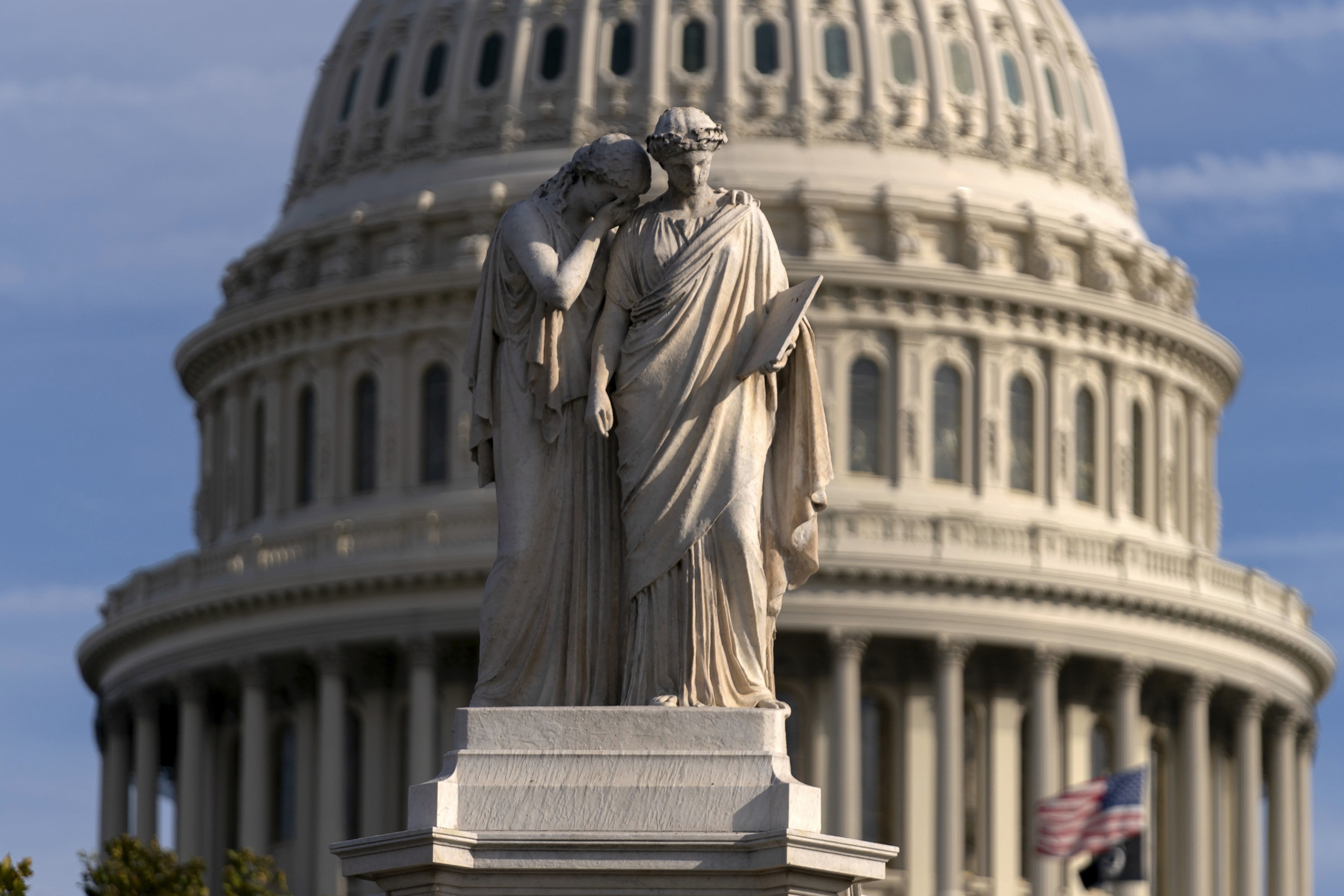President Donald Trump launched his fall push to overhaul the nation's tax system by pledging Wednesday that the details-to-come plan would "bring back Main Street" by reducing the crushing tax burden on middle-class Americans, making a populist appeal for a proposal expected to heavily benefit corporate America.
Trump said his vision for re-writing the tax system, a key campaign pledge, would unlock stronger economic growth and benefit companies and workers alike. He promised it would be "pro-growth, pro-jobs, pro-worker and pro-American."
True to form for the president, Trump dangled the prospect of the "biggest ever" tax cut and warned that without it, "jobs in our country cannot take off the way they should. And it could be much worse than that."
Trump, who rarely travels to promote his policy agenda, chose to debut his tax overhaul pitch before employees at a manufacturing plant in Springfield, Missouri, a community known as the birthplace of Route 66, one of the nation's original highways, and one known as America's Main Street.
"This is where America's Main Street will begin its big, beautiful comeback," the president declared.
After eight months without any major legislative victories and after a significant defeat on health care, Trump and Republican congressional leaders face mounting pressure to notch some significant achievements before next year's midterm elections. But the tax overhaul effort already is facing political headwinds.
The White House and Republican lawmakers have not finalized details of the plan, and the push comes as Congress returns to face an intense September workload filled with must-do items such as raising the debt limit, funding the government and providing assistance for the Harvey recovery effort.
U.S. & World
While the White House has been designing a tax plan aimed at appealing to Republicans, Trump sought to cast the effort in bipartisan terms. He called on members of both parties to work with him on a "once-in-a-generation opportunity to deliver real tax reform for everyday hard-working Americans."
"I am fully committed to working with Congress to get this job done — and I don't want to be disappointed by Congress, do you understand?" Trump said. "Do you understand? Congress. I think Congress is going to make a comeback."
The president used the official White House event to inject an overtly political message aimed at Missouri Democratic Sen. Claire McCaskill, a top Republican target in next year's midterm elections.
"We must lower our taxes, and your senator, Claire McCaskill, she must do this for you. And if she doesn't do it for you, you have got to vote her out of office," Trump said, drawing out each of the last five words for emphasis.
Even before Trump took the stage, Democrats eagerly laid down their own markers for what the tax plan should look like.
Senate Minority Leader Chuck Schumer outlined a series of conditions, telling reporters the tax cuts should not go to the wealthiest 1 percent of Americans. He added that the plan should not increase the budget deficit and should be written by both parties — not just Republicans like the GOP's failed health care effort.
"If the president wants to use populism to sell his tax plan, he ought to consider actually putting his money where his mouth is" and cut taxes for the middle class, not the richest Americans, Schumer said.
The Trump administration released a one-page set of goals in April for its tax overhaul, followed by a joint statement in July with congressional leaders.
In an interview with the Financial Times last week, Gary Cohn, a top Trump economic adviser, said the White House and Republican leaders had agreed on a "good skeleton" for the plan, and said the tax-writing committee in the House would be drafting legislation while the White House tries to sell it.
Cohn, who recently publicly denounced the president's response to the racial violence in Charlottesville, Virginia, traveled to Missouri with the president and was standing to the side of the stage. But he was not among a number of administration officials whom Trump publicly thanked in his opening remarks.
The White House played down the omission, saying White House staff members typically aren't recognized in prepared remarks, only Cabinet members.
Trump said he would like to see the top corporate tax rate drop from 35 percent to 15 percent. But it's not clear that the top rate will go that low in the plan or what kind of tax break a typical taxpayer would see.
With his promises to the middle class, Trump is essentially betting that the benefits of tax cuts for businesses will flow directly to workers, rather than ending up in the pockets of top executives and wealthy investors.
His administration has asserted that high corporate tax rates primarily hurt workers, since companies can stash their money overseas in countries with lower tax rates.
Trump's Treasury Department cited a 2006 Congressional Budget Office study to back the claim that workers mostly bear the brunt from corporate taxes, as well as research by Kevin Hassett, the economist picked to lead the White House Council of Economic Advisers.
But Treasury officials concluded in a separate 2012 analysis that only 18 percent of corporate taxes' costs fell on labor. This would suggest that Trump's plan is more likely to bolster stock prices and CEO pay than trickle down to worker's salaries.



